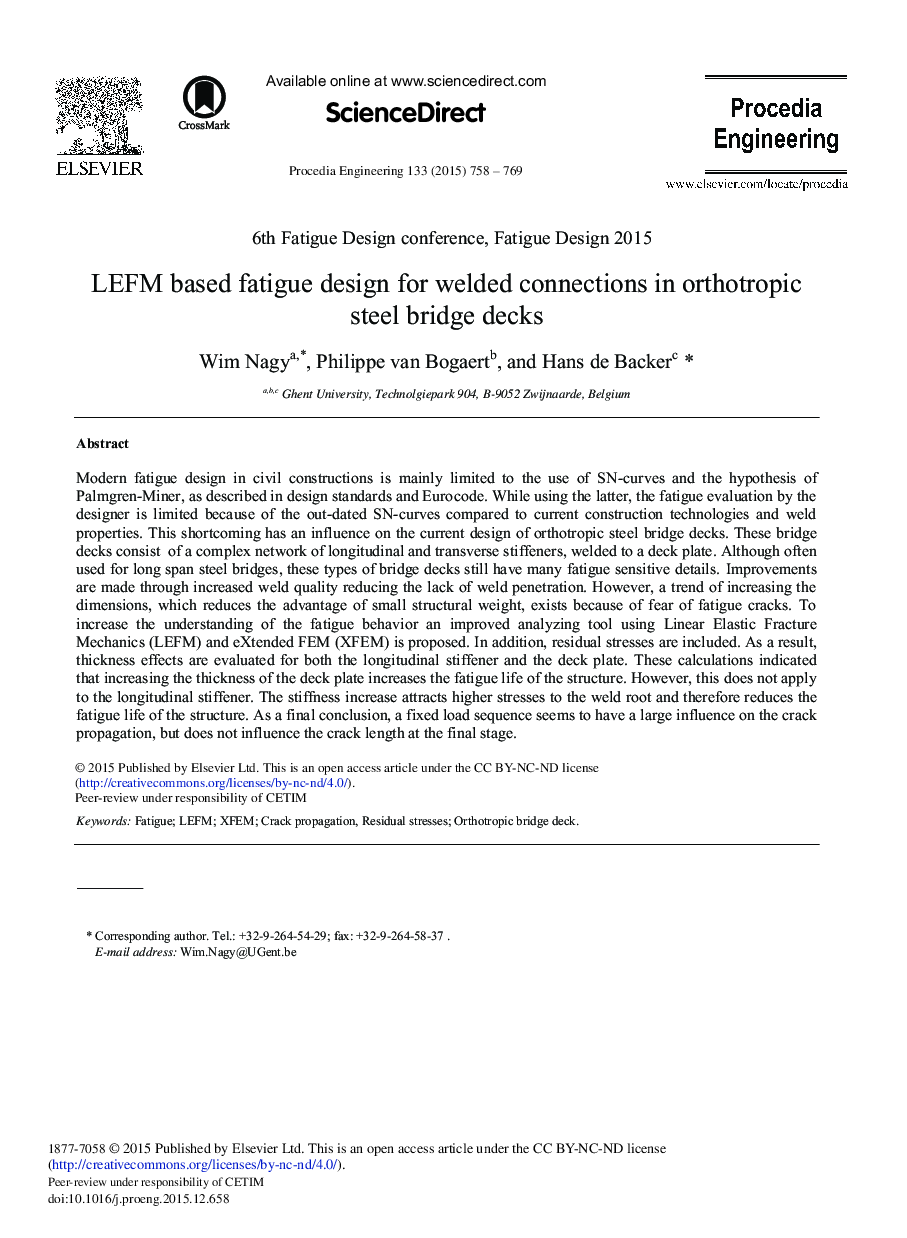| Article ID | Journal | Published Year | Pages | File Type |
|---|---|---|---|---|
| 853982 | Procedia Engineering | 2015 | 12 Pages |
Modern fatigue design in civil constructions is mainly limited to the use of SN-curves and the hypothesis of Palmgren-Miner, as described in design standards and Eurocode. While using the latter, the fatigue evaluation by the designer is limited because of the out-dated SN-curves compared to current construction technologies and weld properties. This shortcoming has an influence on the current design of orthotropic steel bridge decks. These bridge decks consist of a complex network of longitudinal and transverse stiffeners, welded to a deck plate. Although often used for long span steel bridges, these types of bridge decks still have many fatigue sensitive details. Improvements are made through increased weld quality reducing the lack of weld penetration. However, a trend of increasing the dimensions, which reduces the advantage of small structural weight, exists because of fear of fatigue cracks. To increase the understanding of the fatigue behavior an improved analyzing tool using Linear Elastic Fracture Mechanics (LEFM) and eXtended FEM (XFEM) is proposed. In addition, residual stresses are included. As a result, thickness effects are evaluated for both the longitudinal stiffener and the deck plate. These calculations indicated that increasing the thickness of the deck plate increases the fatigue life of the structure. However, this does not apply to the longitudinal stiffener. The stiffness increase attracts higher stresses to the weld root and therefore reduces the fatigue life of the structure. As a final conclusion, a fixed load sequence seems to have a large influence on the crack propagation, but does not influence the crack length at the final stage.
